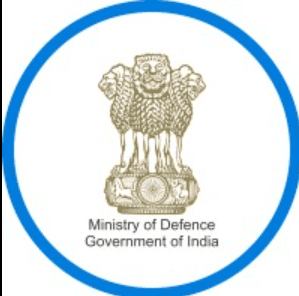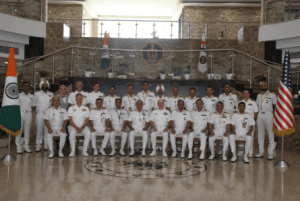New Delhi/Washington: In a significant step towards bolstering bilateral defense collaboration, the 8th Meeting of the India–US Joint Working Group on Aircraft Carrier Technology Cooperation (JWGACTC) was successfully conducted from 13 to 16 May 2025. Established under the broader framework of the India–US Defence Technology and Trade Initiative (DTTI), this working group continues to serve as a vital platform for advancing cooperation in one of the most strategic and complex areas of naval defense — aircraft carrier technology.
 Held across multiple locations in India, including Delhi and Goa, the meeting aimed to assess progress, strengthen professional exchanges, and plan future initiatives related to aircraft carrier development, design, operations, and associated technologies. The event demonstrated the growing maturity of the India–US strategic partnership and the shared vision of both countries to enhance maritime security and defense capabilities in the Indo-Pacific region.
Held across multiple locations in India, including Delhi and Goa, the meeting aimed to assess progress, strengthen professional exchanges, and plan future initiatives related to aircraft carrier development, design, operations, and associated technologies. The event demonstrated the growing maturity of the India–US strategic partnership and the shared vision of both countries to enhance maritime security and defense capabilities in the Indo-Pacific region.
Details of the 8th JWGACTC Meeting



A six-member U.S. delegation led by Rear Admiral Casey Moton, Programme Executive Officer (PEO) for Aircraft Carriers, visited India for the event. The opening session was conducted on 13 May 2025 in New Delhi and was co-chaired by Rear Admiral Vishal Bishnoi, Assistant Controller Carrier Projects (ACCP) of the Indian Navy. The session began with a review of the Joint Working Group’s achievements over the past decade, with both sides appreciating the significant technical insights and information exchange that have occurred since the group’s formation.
Rear Admiral Moton emphasized the importance of this collaborative mechanism and acknowledged the progress made by both nations in enhancing mutual understanding of aircraft carrier development and deployment capabilities. The talks focused on not just operational performance, but also technical evolution, including emerging technologies, system integration, and lifecycle management.
Key Outcomes and Future Cooperation
Among the major outcomes of the meeting was the issuance of a Joint Statement reaffirming both nations’ commitment to deepen cooperation under the JWGACTC framework. Discussions centered around shared technological goals such as electromagnetic aircraft launch systems (EMALS), advanced arresting gear, carrier-based aircraft operations, and carrier support systems. There was also interest in exploring opportunities for co-development and co-production in specific technological domains relevant to aircraft carrier construction and operation.
The group also identified areas for deeper technical collaboration, including modeling and simulation, system-level integration, and sharing best practices in aircraft carrier maintenance and sustainment.
Engagement in Goa: Operational Interactions
Following the Delhi meeting, the US delegation traveled to Goa, where they engaged with Indian Navy aviation specialists. These interactions provided an operational perspective on carrier aviation and technical matters related to takeoff and landing systems, deck management, and maintenance protocols. The Goa leg of the visit helped both sides better understand the practical challenges and innovations shaping the next generation of aircraft carriers.
Strategic Significance
The successful conduct of the 8th JWGACTC reflects the increasing strategic trust between India and the United States. As both nations seek to ensure a free, open, and rules-based Indo-Pacific region, maritime collaboration and shared technological goals in aircraft carrier capability play a pivotal role. The discussions align with broader defense and strategic goals, including interoperability, maritime domain awareness, and defense industrial collaboration under initiatives like DTTI and iCET (Initiative on Critical and Emerging Technologies).
Conclusion of India–US Defence Collaboration



The 8th Meeting of the India–US Joint Working Group on Aircraft Carrier Technology Cooperation marked another major milestone in the ongoing defense partnership between the two democracies. With a decade of successful cooperation behind them, India and the United States have laid a strong foundation for future joint initiatives in naval innovation and technological advancement. The continued momentum of the JWGACTC will not only enhance each country’s aircraft carrier capabilities but also contribute to maintaining strategic stability and maritime security in the Indo-Pacific region.
For more details check the press release on PIB website.
For more real-time updates, visit Channel 6 Network.

